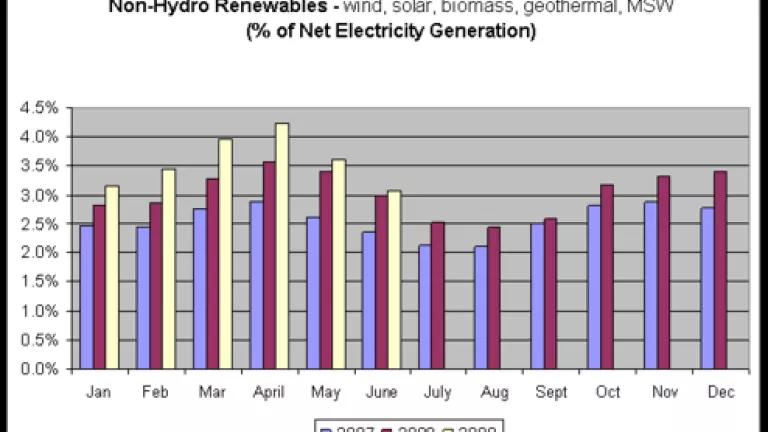
Last week, the Energy Information Administration or EIA (the non-partisan energy data and analysis unit of the federal government) released its Monthly Energy Review, which covers a wide range of energy statistics, including pricing, generation, consumption and CO2 emissions. In the very short-term, comparisons of data points in the energy sector pick up mostly noise and volatility. However, I think we're starting to get enough real data in the renewables sector to be able to begin teasing out early signs of a longer-term trend.
The chart below looks at MER data on non-hydro renewable generation (e.g. biomass, wind, solar, geothermal, MSW) as a percent of net electricity generation, and shows consistent and impressive growth . I've used penetration share instead of generation hours to reflect the recent reduction in net generation in the past twelve months which skews the data somewhat.
Of course, while growth in renewables has been strong (MER data indicates monthly penetration rates have grown 40% on average since 2007), they still represent a small portion of overall domestic electricity generation. It will be worth watching the rest of 2009 to see how both the electricity industry in general and the renewables market specifically respond to continuing tight capital conditions and reduction in electricity demand.
In charting this data, I was also somewhat surprised by the seasonable variability of renewable generation. Much as how natural gas generation spikes during the winter, renewable generation appears to have its own spike during spring and autumn. I haven't looked into this deeply, but I suspect it may be due to indirect impacts from the overall fuel generation mix throughout the year and pricing on the wholesale generation market. It may also reflect the impact of seasonality on wind generation, which is responsible for most non-hydro generation. Definitely the subject of a future post.
Slicing the monthly breakdowns a little further shows how fuel generation dynamics are changing both in terms of individual market growth, and percentage of net generation. Given that I only have data from the first six months of 2009, I've done separate comparisons of 2009 to both the first six months of 2008, and the first six months of 2007. Each chart below corresponds to the table above it. I suspect that the market volatility, recession and reduction in electricity demand have had unexpected impacts on our generation mix in the past year, and therefore, believe comparisons between 2009 and 2007 might be more useful to see overall trends.
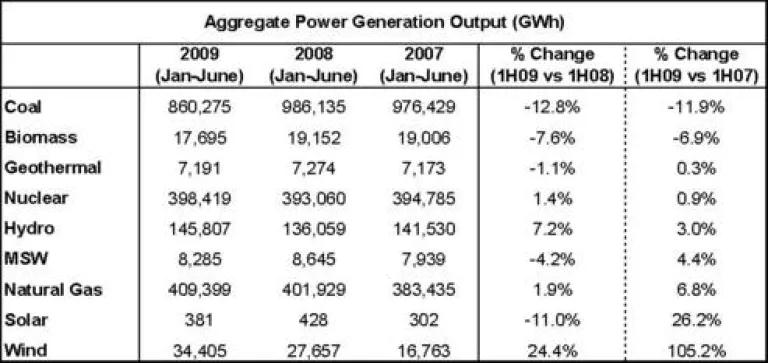
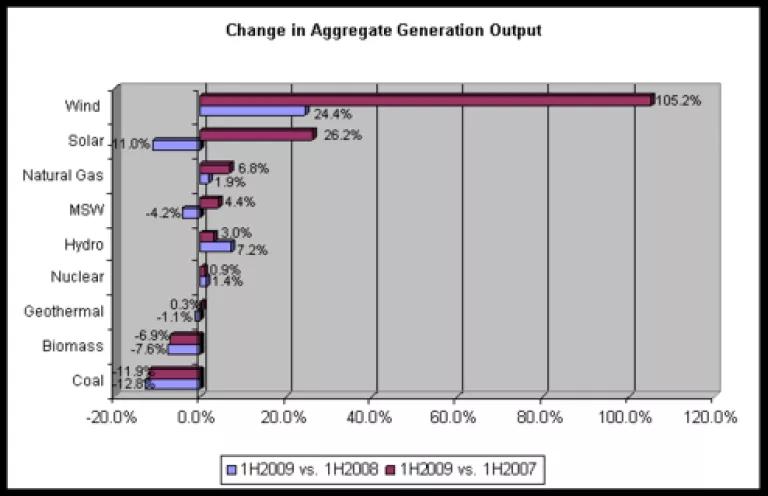
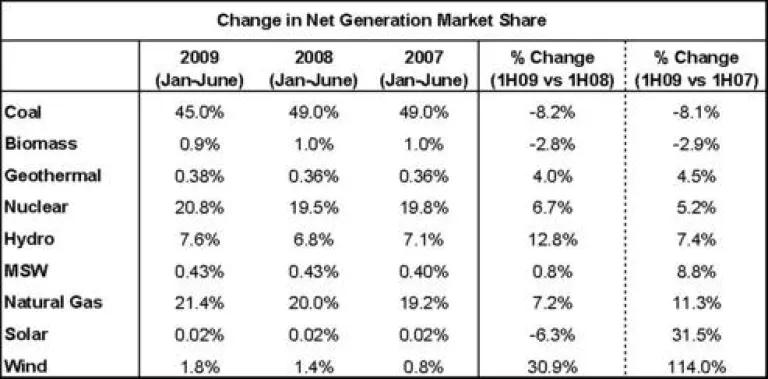
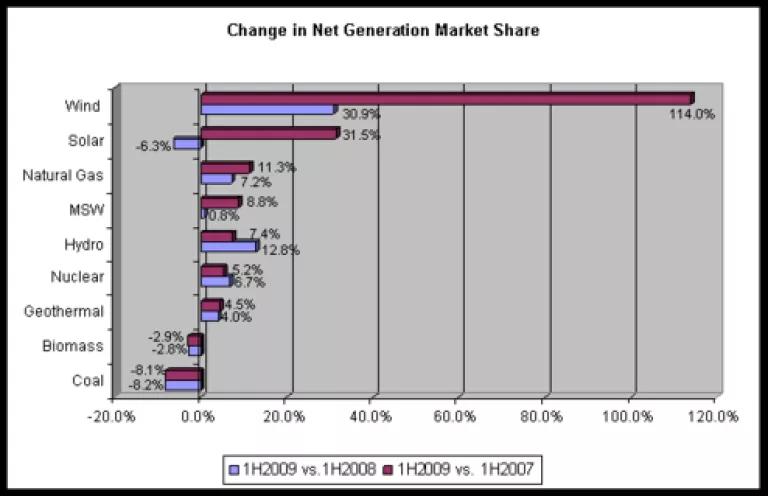
Unsurprisingly, given its strong growth over the past few years off an increasingly significant base, wind shows dramatic increases in both aggregate generation output (the amount of total generation in the first half of the year) and change in net generation market share (which measures the percent change in the specific technology's penetration level or share of overall electricity generation). Solar sees some growth overall in the past 2 years, but off a miniscule base. Interesting also are the developments occurring in coal and natural gas. Natural gas generation has grown significantly (especially given its already large base) on both a generation and market share base. Coal, by comparison, has seen a dramatic fall off. While too complex a topic for this blog post, anyone interested could begin here, here, and here (there's also a host of investment and scientific research available).
Overall, my goal here is not to dive too deeply into the why of these many developments in the energy sector. That can be the subject for many future blog posts. This month's EIA data just seemed especially noteworthy for renewable energy advocates.
